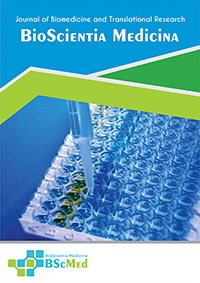Main Article Content
Abstract
Background: The management of acute pain in patients with NSAID-induced urticaria/angioedema (NIUA) is a clinical challenge. These cross-reactive hypersensitivity reactions are driven by cyclooxygenase-1 (COX-1) inhibition, precluding the use of most conventional analgesics. This report presents the successful management of severe post-operative pain in a patient with a confirmed, long-standing NIUA phenotype.
Case presentation: A 56-year-old male with a 40-year history of angioedema induced by multiple COX-1-inhibiting NSAIDs, confirmed by a previous oral provocation test, required urgent herniotomy. Baseline serum tryptase was normal. Post-operatively, initial analgesia with tramadol proved ineffective and induced emesis. Consequently, the patient was administered etoricoxib 90 mg once daily, a highly selective COX-2 inhibitor. This resulted in excellent and sustained pain control, with the Numeric Rating Scale (NRS) score decreasing from 8/10 to ≤2/10 over a seven-day course, and importantly, without eliciting any hypersensitivity reaction.
Conclusion: This case supports the hypothesis that a highly selective COX-2 inhibitor can provide safe and effective analgesia in patients with severe, cross-reactive NIUA. The analgesic choice was directly informed by the underlying pathophysiology, which involves shunting of the arachidonic acid pathway towards pro-inflammatory leukotriene production following COX-1 blockade. This report reinforces that selective COX-2 inhibition is a rational, first-line strategy for managing pain in this high-risk patient population.
Keywords
Article Details
As our aim is to disseminate original research article, hence the publishing right is a necessary one. The publishing right is needed in order to reach the agreement between the author and publisher. As the journal is fully open access, the authors will sign an exclusive license agreement.
The authors have the right to:
- Share their article in the same ways permitted to third parties under the relevant user license.
- Retain copyright, patent, trademark and other intellectual property rights including research data.
- Proper attribution and credit for the published work.
For the open access article, the publisher is granted to the following right.
- The non-exclusive right to publish the article and grant right to others.
- For the published article, the publisher applied for the Creative Commons Attribution-NonCommercial-ShareAlike 4.0 International License.





